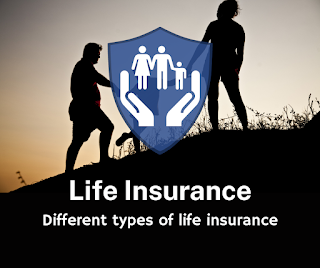What are the different types of Life insurance policies?
What are the different types of Life insurance policies?
There are several types of life insurance policies available, including:
- Term life insurance: This type of policy provides coverage for a specific period of time, such as 10, 20, or 30 years. If the policyholder dies during the term of the policy, the beneficiary will receive a death benefit.
- Whole life insurance: Also known as permanent life insurance, this type of policy provides coverage for the policyholder's entire life. It also typically includes a savings component, known as the cash value, which accumulates over time and can be borrowed against or withdrawn.
- Universal life insurance: This type of policy combines the features of term and whole life insurance, offering both death benefit protection and a cash value component. It also allows the policyholder to adjust the premiums and death benefit amount as needed.
- Variable life insurance: This type of policy also combines term and whole life insurance, but the cash value component is invested in a range of financial instruments, such as stocks and bonds. The value of the cash component and the death benefit can fluctuate based on the performance of the investments.
- Variable universal life insurance: This type of policy combines the features of universal life insurance and variable life insurance, offering both death benefit protection and a cash value component that is invested in a range of financial instruments.
- Group life insurance: This type of policy is typically provided by an employer and covers a group of individuals, such as employees or members of an organization. It may offer a basic death benefit for all members or allow individuals to purchase additional coverage.
- Burial insurance: Burial insurance, also known as funeral insurance, is a type of insurance policy that is designed to provide financial assistance for the expenses associated with funeral and burial services. These expenses can include the cost of a casket, burial plot, grave marker, funeral home services, and other related costs. Burial insurance policies typically have smaller death benefits compared to traditional life insurance policies, as they are designed specifically to cover funeral and burial expenses rather than provide ongoing financial support for the policyholder's family.
- Survivorship life insurance : This insurance also known as second-to-die life insurance, is a type of life insurance policy that covers two people, typically a married couple. The policy pays out a benefit to the beneficiaries after the second person covered by the policy has died. This type of insurance is often used to cover estate taxes or to provide financial security for surviving family members after the death of both policyholders.
- Mortgage life insurance: This is a type of insurance policy that pays off a borrower's outstanding mortgage balance in the event of their death. This can be a helpful financial tool for homeowners who have a mortgage and want to ensure that their family will be able to keep their home even if something happens to them. Mortgage life insurance is typically purchased by the borrower and is designed to cover the remaining balance on the mortgage at the time of the borrower's death. If the borrower passes away and their mortgage life insurance policy pays off the outstanding mortgage balance, the borrower's family or estate will not be responsible for making any further mortgage payments.
- Credit life insurance: This is a type of insurance that is designed to pay off an individual's outstanding debts in the event of their death. It is typically offered to borrowers as an optional add-on when they take out a loan or credit card. The premiums for credit life insurance are generally paid along with the borrower's regular loan or credit card payments.
- Supplemental life insurance: This is a type of life insurance policy that provides additional coverage beyond a basic life insurance policy. It is usually purchased by individuals who have a need for more life insurance coverage than what is provided by their employer or by a basic life insurance policy.

.png)
.png)
.png)
Comments
Post a Comment